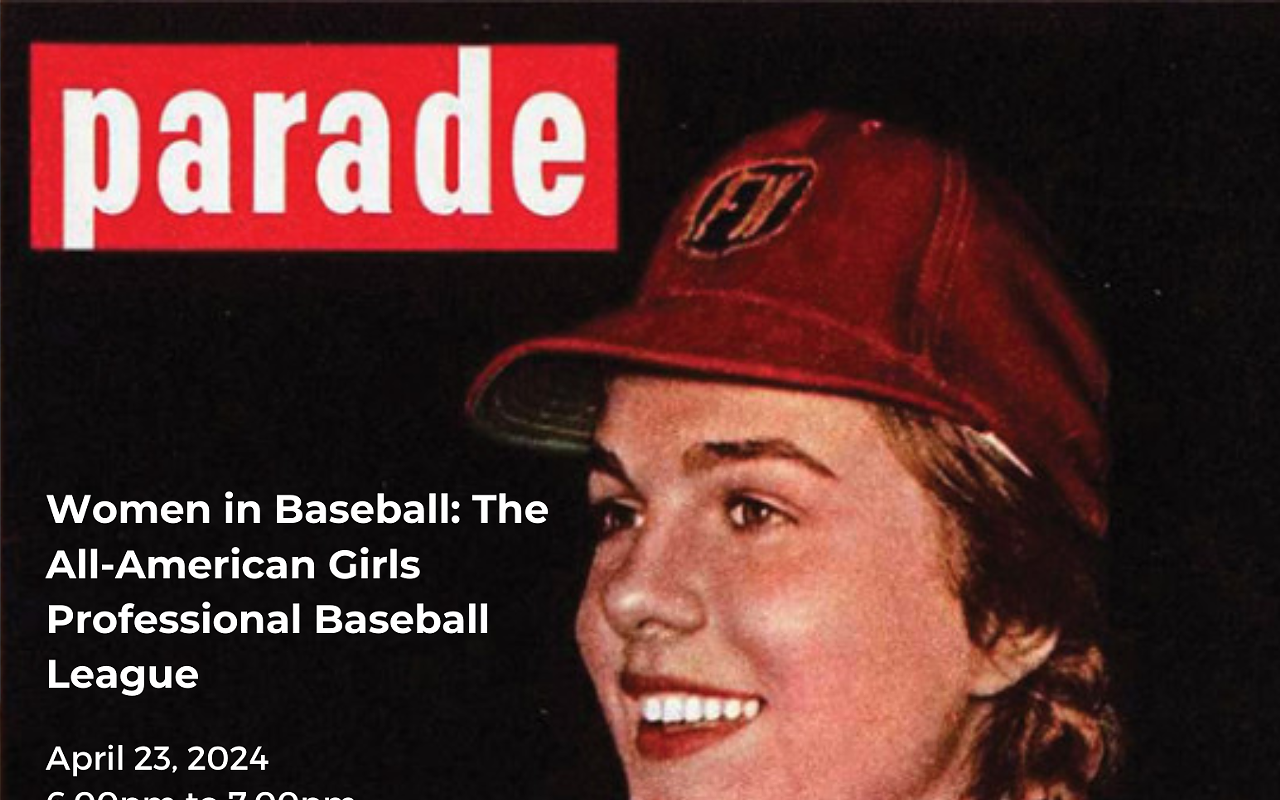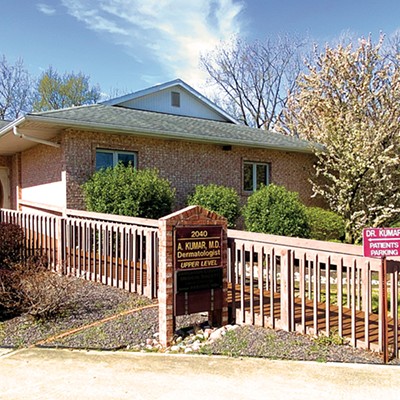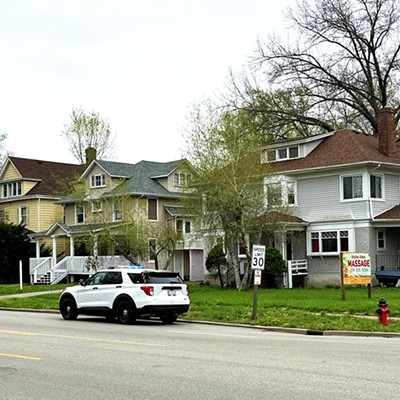As an artist exhibiting at the Old Capitol Art Fair, I displayed a print of the Orpheum Theater, which was torn down in 1965. On seeing the print, many people remarked about what a great loss it was that Springfield's largest and most majestic theater was demolished. In hindsight this is obvious; today, no one would ever say, "Tear it down and build a drive-through bank." Yet this is what happened.
My fear is that the Hunter Lake site on Horse Creek will become the next Orpheum, a jewel lost because people took it for granted and didn't realize that it was unique until it was gone. The best areas are comparable to Washington and Carpenter parks, with white-oak-covered hillsides overlooking the winding creek. Comparing a landscape to a work of architecture is a stretch, I admit, but the emotional response to a great example of beauty is the same, regardless of whether it is natural or manmade: awe in the face of transcendent splendor. Both possess unity of design, grandeur, and exquisite detail. Unlike the Orpheum, which is gone forever, the Horse Creek Valley can still be saved because the lake doesn't need to be built.
The truth is that Springfield doesn't need the additional water the lake would provide. There are simpler and cheaper ways to guarantee our water needs. Even Mayor Tim Davlin agreed two years ago, saying, "I don't think Hunter Lake is going to happen. I think that's one of the things we're investigating. Do we really need Hunter Lake?" A front-page article in the Sept. 17, 2003, edition of the State Journal-Register reads:
Davlin said one reason Hunter Lake may not be as necessary is that the city may convert the ash disposal procedure at its electric power plants to a dry system where ash generated by the coal-burning plants is not mixed with water.
"Under the current system," said Jay Bartlett, chief utilities engineer
for City Water, Light and Power, "the ash is mixed with what could be 10 million
gallons of water a day from Lake Springfield. That water/ash mixture is piped
from the power plant complex across Spaulding Dam to a retention pond."
Davlin, in a telephone interview, said that if millions of gallons of water are saved each day because it is not needed to help with the movement of ash, that adds weight to arguments against building Hunter Lake.
Nothing more was heard from City Hall until this June, when the mayor mentioned that a CWLP report on Hunter Lake and the new power plant would be forthcoming. Then, in July, CWLP chief Todd Renfrow, interviewed on WMAY (970 AM) said that the plan to build Hunter Lake was moving forward and that an official announcement regarding construction would be made April 1 of next year. April 1? The interviewer chuckled, realizing the irony of making the announcement on April Fool's Day, because it's a standing joke in Springfield that the date for the lake is always being pushed further into the future. "No, April 2," Renfrow corrected himself. "We'll make our announcement on April 2."
Justifying the need for the second lake, Renfrow said that the current level of Lake Springfield is down 10 inches and that if the lake level drops far enough, the power plant won't be able to operate. The truth is that even though this has been a particularly dry spring and summer, lake levels have remained adequate. Renfrow went on to suggest that with the second lake CWLP could sell water to outlying communities such as Mechanicsburg and Buffalo, shifting the rationale for the lake to providing additional revenue for CWLP.
Wondering what had happened to the supposed water savings that would result from the redesign of the power plant's ash-transfer system, I called the mayor's office to inquire. I was told that no report had been issued and that if I wanted further information regarding the power plant and Hunter Lake, I would have to file a request under the Freedom of Information Act. Apparently this water-saving measure has been dropped from the plans.
A political project
It's not hard to see why certain segments of the community would like to see the $75 million Hunter Lake project go forward. Construction workers, engineering firms, heavy-equipment dealers, and the like would benefit greatly, not to mention those involved with the sale of bonds. The project would be paid for, of course, by raising customers' water rates around 50 percent, and because most of us don't have a choice of where we get our water, we're stuck paying for it whether we need it or not.
A privately owned company would think long and hard before deciding to spend this much money on a project that would be used so infrequently. Electric utilities don't build huge new generating stations only to be used occasionally during times of peak demand; they use low-cost gas turbines. In fact, CWLP has relied on a low-cost supplemental water source for years, pumping water into the lake from a pool backed up by a low dam on the South Fork, near the Oak Hills subdivision in Rochester. Additionally, during the dry year of 1988, the city received approval from the Illinois EPA to construct another low dam on the Sangamon to pump additional water into the lake, although conditions improved and it was never built.
It is commonly known that Springfield is a
political town, and Hunter Lake is a political project. In 1988,
under the Ossie Langfelder administration, the City Council voted
10-0 to build Hunter Lake. Todd Renfrow understands the political
game (in the '70s he was chairman of the Sangamon County
Democrats), and he now seems determined to see the second lake
built. Opposition to the lake has come from landowners,
environmentalists, and fiscal
conservatives.
What is helping the opposition is that per capita water use is actually decreasing from levels in the 1980s, when CWLP made projections to justify the new lake. Because of water savings resulting from standards set by the 1992 National Energy Use Act, essential indoor uses of drinking-quality water for bathing, washing, and sanitation will be 36 percent less per person in 2025 than in 1991. New plumbing fixtures standard in new construction include low-flow shower heads, water-saving toilets, and motion-sensitive faucets in public restrooms. Twenty-five years from now, the only beneficiaries of Lake II will be golf courses and other large landscapers, who will be able to irrigate with impunity using treated drinking water, during times of drought. Just as CWLP encourages electricity conservation, it would be far more sensible to encourage landscapers and developers to use plantings of native plants and grasses that grow well without irrigation than to build a second lake.
Plans for Lake II were first announced in 1965, a time when Springfield still had industries such as Allis-Chalmers, Sangamo Electric, and Pillsbury Mills. Only three decades earlier, the WPA built the great dams of the West on the Colorado, the Columbia, and the upper Missouri. It wasn't until years later that people became aware of some of the negative consequences of these dams: salmon populations were decimated when they couldn't return to their spawning grounds, and the natural flood pulse on rivers was eliminated, wiping out sand bars that served as habitat for certain species. Also, shallow dams in flat farm country such as central Illinois will eventually silt in with erosion runoff and will require dredging if they are to remain useful. Since the 1960s, scientists have become more aware of the subtle ecological balances found in nature and have come to understand the intrinsic value in free-flowing, healthy rivers.
A unique resource
One of the reasons I think that the Hunter Lake idea was so easily sold to the public in the first place is that in general lakes are beautiful and associated with sport and relaxation. However, a study of the potential recreational benefits of Hunter Lake was conducted in the early '90s. It concluded that little would be gained because the community's needs for fishing and boating are already adequately met by Lake Springfield and Lake Sanchris. A tranquil river valley in a natural setting free from development is, in today's world, a more valuable resource.
Since the city began buying up farms in the Horse Creek and Brush Creek valleys 40 years ago, no new building in the area has occurred. The nearly 8,000-acre site is like a time capsule preserving the land as it once was, unlike most of the other wooded valleys in Sangamon County, which have been divided up into rural home sites.
Of particular note on the Hunter Lake property is the site of one of our area's oldest pioneer villages, called Pensacola. In the 1830s, before Springfield became the state capital, the road to Vandalia crossed Horse Creek, and at this point the Pensacola Tavern was built to accommodate travelers. The two-story brick inn is still standing, and although there are holes in the roof and the windows are gone, the walls and stone foundation remain sound. Also in this community was a thriving pottery works and a quarry that provided some on the sandstone for the construction of Springfield's Old State Capitol building.
Although there is no record of Abraham Lincoln's ever visiting the tavern, it's reasonable to think he could have done so, for it was the first stagecoach stop outside Springfield on the road Lincoln would have traveled to Vandalia, the state capital in 1834, when he began his service in the Legislature. Later, as reported in the Sept. 10, 1860, Illinois State Journal, Pensacola was the locale for a political rally for Stephen A. Douglas when he was running for president against Lincoln. Considerable evidence indicates that this historic site is worthy of being saved.
What would become of the Hunter Lake site if a lake is not built? Five years ago, Jim Matheis, executive director of Lincoln Memorial Garden, said: "The land acquired for Hunter Lake would make a great beginning for a conservation district if plans for the new lake do not come to fruition." Many of the larger counties in Illinois have conservation districts that provide greenspace protection. Cook County may be the best known for its forest preserves, but all of the collar counties, as well as Champaign and Macon Counties in central Illinois, have similar programs. Sangamon County officials have acknowledged the need for such a plan locally but are wary of the cost involved. The Hunter Lake land could become such a preserve at low cost; the land is already under public ownership.
Looking ahead 100 years, the metropolitan area of greater Springfield could easily extend to New Berlin, Pawnee, Mechanicsburg, and elsewhere. By taking care of our current lake through dredging and making water-quality improvements such as grass filter strips in its upstream watershed we can have ample drinking water for our community's needs. By creating the John Hunter County Conservation Area, we can provide open space and protect native plant and animal communities for our future generations, as well as improve the desirability of Springfield as a place to live.
The land along Horse and Brush creeks could be developed with hiking, horse, and bicycle trails. Several small parking lots could be created at the edges of the preserve. A small annual budget could be allocated toward long-term restoration goals, starting with the highest-quality natural areas, such as the white-oak-covered hillsides and burr-oak and sycamore bottomlands. Prairie-landscape restoration could also be accomplished on the upland areas bordering the creeks.
In conclusion, we have a dam project that was designed 40 years ago in a different era, when nature was seen as an unlimited resource. We now see that conservation is a valid, economically sound alternative to unrestrained growth. By converting the power plant to a dry-ash disposal system, we can conserve more water at a lower price, making Lake II financially imprudent to build. When you couple the saving on our water bills with the gain to the community of a beautiful, large, diverse natural area, it becomes obvious that the Hunter Lake idea has expired. It's time for Springfield to move on to a bright and ecologically sound future.



















